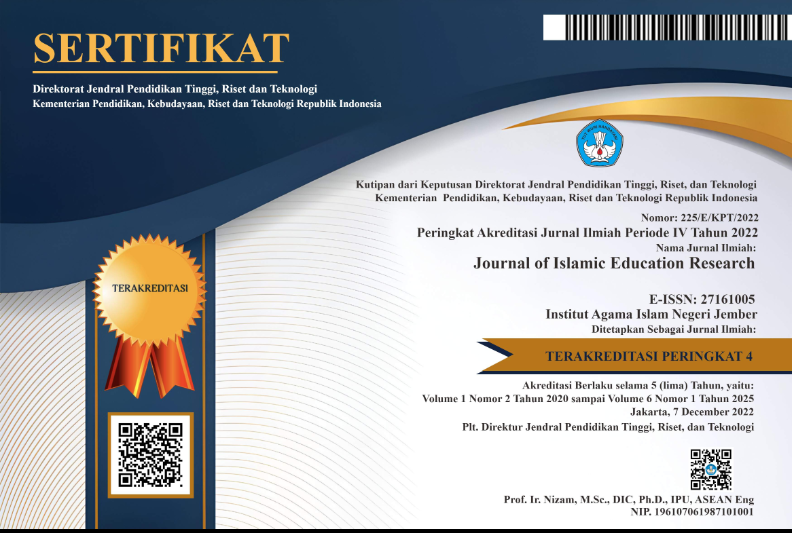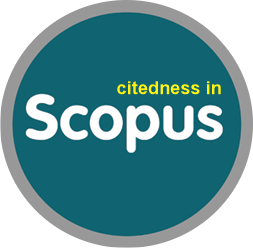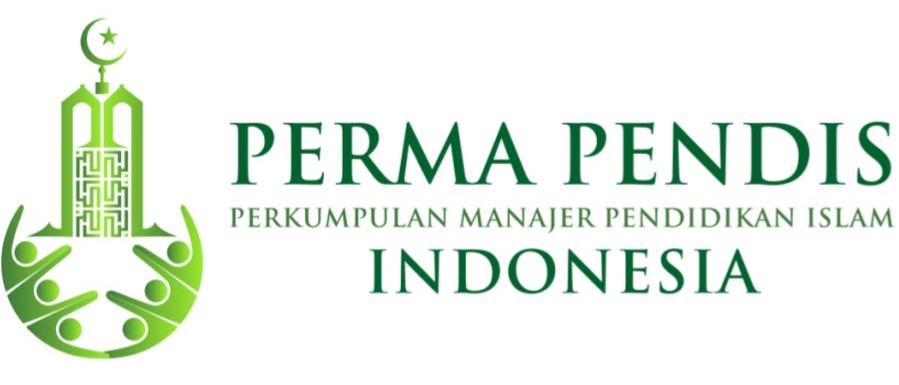Islamic Religious Education Literacy and Numeration In the Perspective of the Al-Quran and Hadith
The word Iqra 'is usually translated as "read.” This understanding follows the word Qara'a, which first meant "gathering.” The Qur'an o.” en uses the word Qara'a in various verses. When he received this sentence the, Prop,het Muhammad trembled and said he could not read. However, this verse’s revelation shows how the highest glorification and assessment of the ability to read and write various sciences is. These verses show that Allah SWT teaches people diverse knowledge, He opens multiple secrets, and He gives different keys to open the treasury of Allah's command, namely with a qalam or pen. Besides tongue reading, Allah also ordained that knowledge can be recorded. The Prophet Muhammad was a person who was not good at reading and writing, but he understood the importance of literacy. Literacy here is the ability to read and write. Including the ability to speak, calculate and solve problems at hand.
Downloads
References
Affandi, Yuyun, Agus Darmuki, and Ahmad Hariyadi. “The Evaluation of JIDI (Jigsaw Discovery) Learning Model in the Course of Qur an Tafsir.” International Journal of Instruction 15, no. 1 (2022): 799–820.
Ahmed, S M, A A Rushdi, and W S Ismael. “Pragmatic Uses of Compliment Speech-Act Verbs.” Journal of Language and Linguistic … 18, no. 1 (2022): 543–555. http://www.jlls.org/index.php/jlls/article/view/3833%0Ahttps://www.jlls.org/index.php/jlls/article/viewFile/3833/1027.
Almuhaimeed, Sultan Abdullah. “Evaluating the Validity of Saudi English Language Undergraduate Students’ Results in Light of Proposed Criteria.” Journal of Language and Linguistic Studies 18, no. 1 (2022): 359–378.
Anastasia, O, Y Yemelyanova, A Sukhova, and ... “The Expediency of Implementation of Project Work into the English for Specific Purposes Course.” Journal of Language … 18, no. 1 (2022): 80–89. http://www.jlls.org/index.php/jlls/article/view/2764%0Ahttps://www.jlls.org/index.php/jlls/article/download/2764/993.
Bantam, Punyapa. “The Effect of Teaching English Synonyms through Data-Driven Learning (DDL) on Thai EFL Students’ Vocabulary Learning.” Shanlax International Journal of Education 10, no. 2 (2022): 80–91.
Buddeberg, Klaus, Gregor Dutz, Lisanne Heilmann, Christopher Stammer, and Anke Grotluschen. “Participation and Independence with Low Literacy: Selected Findings of the LEO 2018 Survey on Low Literacy in Germany.” Adult Literacy Education: The International Journal of Literacy, Language, and Numeracy 3, no. 3 (2021): 19–34.
Dawood, Taha Ali. “ISLAMIC Sciences Journal” 2025 (2021): 278–298.
Deveci, ?sa. “Review of Entrepreneurship Education Literature in Educational Contexts: Bibliometric Analysis.” Participatory Educational Research 9, no. 1 (2022): 214–232.
Fathollah, Moh. Fauzan. “Perintah Literasi Dalam Perspektif Alquran Dan Relevansinya Terhadap Program Nawacita ‘Indonesia Pintar.’” Skripsi (2018): 105.
Getenet, Seyum Tekeher. “Teachers’ Knowledge Framework for Designing Numeracy Rich Tasks across Non-Mathematics Curriculum Areas.” International Journal of Education in Mathematics, Science and Technology 10, no. 3 (2022): 663–680.
Jibrel, Harb Al-Saudi, and Eid Al-Rawajfeh Aiman. “Cementing Devices and Ambiguity in the Holy Quran: Al-Qasas Surah as a Model.” Educational Research and Reviews 17, no. 2 (2022): 68–73.
Karatas, Pinar, and Asli Aktan-Erciyes. “JOURNAL OF LANGUAGE AND LINGUISTIC STUDIES Relation between Creativity, Executive Functions and Bilingualism.” Journal of Language and Linguistic Studies 18, no. 1 (2022): 240–248. www.jlls.org.
Kosanke, Robert M. “??No Title No Title No Title” (2019): 56–59.
Mansyur, Masykur H. “Iqra’ Sebagai Bentuk Literasi Dalam Islam.” Hawari Jurnal Pendidikan Agama dan Keagamaan Islam 2, no. 1 (2021): 1–7.
Moneyam, S, N Y Abdullah, and M F Zaini. “ESL Teachers’ Assessment Literacy in Classroom: A Review of Past Studies.” Journal of Language and Linguistic Studies 18, no. 1 (2022): 1–17. www.jlls.org.
The point, Data. “U . S . Adults With Low Literacy and Numeracy Skills?: 2012 / 14 to 2017,” no. May (2022).
Randall, David, and Ashley Thorne. “Making Citizens: How American Universities Teach Civics,” no. January (2017): 525.
Sezgin, Zuhal Çeliktürk. “Systematic Analysis of Digital Reading Studies in the Digital Age.” Participatory Educational Research 9, no. 1 (2022): 233–250.
Studies, Linguistic. “JOURNAL OF LANGUAGE AND LINGUISTIC STUDIES Diminution in Arabic?: A Suggested Strategy to Mona Baker’s s Non-Equivalence Problem “ Differences in Form "18, no. 1 (2022): 85–93.
Studies, Literary, Australian International, and Academic Centre. “Pragmatic Study of Directive Speech Acts in Stories in Alquran.” Advances in Language and Literary Studies 7, no. 5 (2016).
Terhadap, Hamka, and Surat Al- Alaq. “KONSEP LITERASI DALAM AL-QURAN?: TELAAH ATAS PENAFSIRAN M . QURAISH SHIHAB DAN” (2005): 1–5.
Toraman, Çetin, Osman Aktan, and Gunes Korkmaz. “How Can We Make Students Happier at School? Parental Pressure or Support for Academic Success, Educational Stress and School Happiness of Secondary School Students.” Shanlax International Journal of Education 10, no. 2 (2022): 92–100
Downloads
Section
Copyright (c) 2022 Ainur Rofiq Sofa, Mukni’ah, Mashudi

This work is licensed under a Creative Commons Attribution-ShareAlike 4.0 International License.












